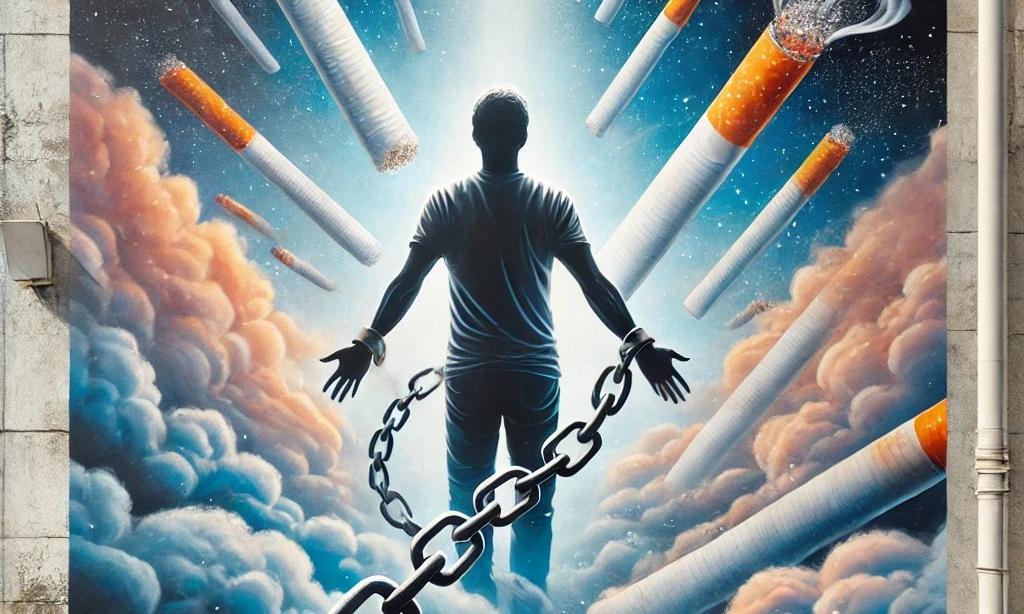
For decades, smoking has remained one of the most devastating public health crises worldwide. However, societal misconceptions persist, casting judgment on those who smoke and labelling them weak-willed, morally flawed, or simply overindulgent. These stigmas are not only inaccurate, but deeply harmful. Science has long proven that addiction is not a personal failing but a chronic medical condition – one that rewires the brain, fosters dependency, and requires medical support and systemic change to overcome. Despite this, millions remain trapped in cycles of shame, isolation, and addiction, perpetuated by judgment and limited access to solutions.
Stigma: The Invisible Barrier to Recovery
Stigma extends beyond being a social barrier; it traps those who smoke in cycles of dependency and shame. They are often judged as having chosen their fate, rather than being seen as individuals battling a medical condition. This harsh perception fuels guilt and hopelessness, discouraging many from seeking help. Even with effective treatments and technologies available, societal attitudes and policies often deter those who smoke from accessing them, leaving them to face their struggles in isolation.
“Tobacco addiction is a medical condition, just like any other, and it should be treated as such. I wouldn’t tell my patients with asthma to simply rely on air purifiers to treat the condition they suffer from. I would prescribe inhalers to help manage their condition. Similarly, smoking should be approached with the same medical perspective, rather than criminalizing and stigmatizing those who struggle with the addiction.”
Despite the Supreme Court of India recognizing addiction as a medical condition, societal attitudes and policymaking continue to lag behind. Misconceptions persist, leaving those who smoke feeling marginalized. While evidence-based treatments like nicotine replacement therapies are available, the limited availability and cost of harm reduction products restricts options for those seeking alternatives. Combined with a fear of judgment, this further discourages those who smoke from pursuing available support.
The Socio-Economic Impact of Tobacco Addiction
Tobacco addiction impacts not just individual health but also families, communities, and economies. Families bear emotional and financial burdens, with loved ones becoming caregivers and facing costly treatments. This strain disrupts family dynamics, leads to income loss, and reduces overall quality of life. In India, the economic toll of tobacco use is estimated at ₹177,000 crore annually, highlighting the urgent need for harm reduction and support initiatives. Communities also suffer from decreased productivity and higher healthcare expenses.
Additionally, the harm caused by tobacco perpetuates cycles of poverty, especially in rural areas where farmers rely on tobacco cultivation for their livelihoods. These socio-economic dependencies complicate the implementation of cessation programs and policies, without addressing the structural dependencies on tobacco.
The Psychiatric Gap and the Need for Accessible Interventions
While psychiatrists and mental health professionals play a vital role in treating tobacco addiction, a vast majority of those who smoke—nearly 99%—avoid seeking treatment because of stigma or a lack of awareness. Even among those who access care, treatments like antidepressants or anxiolytics without proper follow-up rarely lead to long-term recovery. Many also turn to “replacement addictions” as they attempt to quit, creating a complex issue that only worsens without a comprehensive solution.
Technology: A New Frontier in Breaking Barriers
Incorporating technology can greatly aid the journey of recovery. Digital tools like AI-driven health apps, virtual counseling platforms, and personalized health tracking devices offer accessible, evidence-based interventions at scale. These technologies can ease the recovery process by providing behavioral prompts, education, and personalized care that work alongside traditional healthcare systems.
Furthermore, advancements in technology have led to the development of new harm reduction products, which provide safer alternatives to traditional tobacco use and reduce associated health risks.
These tools are not meant to replace human interaction but to enhance it—offering opportunities for personalized care, community outreach, and harm reduction strategies that can reach millions, including those in underserved areas.
From Stigma to Solutions: A Path Forward
Breaking the cycle of tobacco addiction requires collective action rooted in compassion. Solutions must go beyond treatment to dismantle stigma, build support networks, and promote education. Governments, organizations, and communities must collaborate to create inclusive policies that address addiction’s socio-economic effects, prioritize affordability, and ensure access to innovative harm reduction tools.
Reframing addiction as a medical issue rather than a moral failing opens the door to recovery without shame. Together, we can replace stigma with support, judgment with understanding, and isolation with community. The time to act is now— let us build healthier, more resilient societies where every individual can reclaim their health and future.
This article is authored by Dr. Lancelot Mark Pinto, Consultant Pulmonologist and Epidemiologist, PD Hinduja Hospital and Medical Research Centre.
